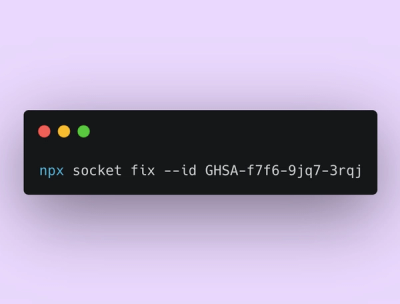
Product
Rust Support Now in Beta
Socket's Rust support is moving to Beta: all users can scan Cargo projects and generate SBOMs, including Cargo.toml-only crates, with Rust-aware supply chain checks.
phantom-phoenix
Advanced tools
Redis based phantomjs queue
redis (https://github.com/antirez/redis)$ npm install)npm test)By default it subscribes to a single channel specified in the config
Before you start using the application, assure that a redis server is running ($ redis-server).
Phoenix will refuse to start if redis is down
$ node app.js)This trigger the node application to spawn a new phantomjs child process and opens the website.
You can see the config.sample.yml for a sample configuration.
Note that some options are incompatible with each other, for eg
you can't send a request body in a GET request.
Do not edit default.yml unless you are working on phoenix itself.
By setting the js key in config.yml you can run code on the loaded web page before the page is
loaded itself.
phoenix logs every phantomjs instance. For every instance that is created, a new temporary
directory is created in the logs directory. The config passed to phantomjs is stored in the config.json
file. The output from the phantomjs instance is stored in two files: browser.log and page.log.
browser.log is the higher level log file, which records events and errors made by the browser instance.
Such as Injection events and final status of the page load.
page.log holds the log from the page context. This includes any console.log statements made from the page
and any alert/confirm/prompt calls as well.
Instead of cloning and running the entire repo for each project, you can use the npm package
(called phantom-phoenix), which has its own binary called phoenix which you can run.
To run phoenix in a directory, the following conditions must be true:
config.yml file must exist in the directoryAfter that you can append messages to the list specified in the config, and phoenix will start runners for each of your requests once you publish the id
You can append two things to the list:
a=1&b=2). This overrides and merges with existing query params in the configThis way, you can send an id=1 and phoenix will open the correct url.
Instead of just using a redis pubsub, we use a hybrid pubsub+list model as queue to store logs. Instead
of directly publishing the request to the channel, you push it to a list, and then publish the index
of the just pushed item on the list. The list is maintained at $channel:queue, where $channel is the queue
name specified in the config.
For, eg if the channel name is the default (phoenix), you do the following:
phoenixredis-cliRPUSH phoenix:queue "http://google.com"`
(integer) 8
PUBLISH phoenix 7
phoenix will pick this up and give something like following as output:
START: phoenix-11634lNeXLbHqhRM3
STOP : phoenix-11634lNeXLbHqhRM3
FAQs
Redis based phantomjs queue and runner
We found that phantom-phoenix demonstrated a not healthy version release cadence and project activity because the last version was released a year ago. It has 1 open source maintainer collaborating on the project.
Did you know?

Socket for GitHub automatically highlights issues in each pull request and monitors the health of all your open source dependencies. Discover the contents of your packages and block harmful activity before you install or update your dependencies.

Product
Socket's Rust support is moving to Beta: all users can scan Cargo projects and generate SBOMs, including Cargo.toml-only crates, with Rust-aware supply chain checks.

Product
Socket Fix 2.0 brings targeted CVE remediation, smarter upgrade planning, and broader ecosystem support to help developers get to zero alerts.

Security News
Socket CEO Feross Aboukhadijeh joins Risky Business Weekly to unpack recent npm phishing attacks, their limited impact, and the risks if attackers get smarter.